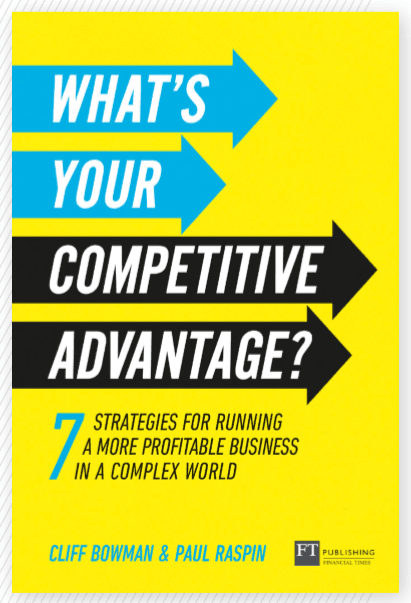We live in a complex world. Political uncertainty, emerging disruptive technologies and socio-economic pressures all combine to create an environment where predicting, and planning for the future is one of the biggest challenges business leaders face today. The reality is that managers actually have very little control over any factors a?ecting their organisation, so they need to work with complexity, rather than pretend it isn’t there. So how is it possible to build a strategy that provides a clear overall direction for a business, regardless of uncontrollable, changing circumstances? After a 10-year research project, leading business consultants Professor Cli? Bowman and Dr Paul Raspin have identi?ed the 7 key strategies that have allowed both new and established businesses to thrive through uncertainty. In their practical new book,
What’s Your Competitive Advantage?
, they provide a guide to successfully implementing and creating lasting value through each approach, with real-life case study examples, including:
- Specialisation: The ability to focus on a single product or service group and compete through superior product performance e.g. WD40 is purchased by 4 out of 5 American households for a specialist purpose
- Adaptive: Increasing the organisation’s ability to respond to changing circumstances and customer needs e.g. Zara only manufacture clothes where they know there is customer demand
- Low-cost: Delivering equivalent product quality to competitors, but with a relentless focus on cost-reduction e.g. Bavaria Yachts combine precision engineering, automation and robotics to deliver quality yachts at signi?cantly lower cost than its rivals
- Innovation: Targeting those customers who are willing to pay a premium for products and services that meet their needs in novel and superior ways e.g. SpaceX’s commitment to developing re-usable rockets to reduce cost of interplanetary space travel.
- Excellence: Embedding professionalism in the system to create continuous incremental improvements in product or service quality e.g. Lexus’ engineering project enabled the brand to go from zero presence in the luxury car market to parity with European manufacturers.
- No frills: Focusing on serving price-sensitive customers with a stripped down alternative product or service e.g. ALDI o?ering just the products that price-sensitive customers value.
- Targeting: Serving the needs of one speci?c market segment more e?ectively than less focused rivals e.g. Long Tall Sally producing clothes only for taller women, using their understanding of what it means to be a tall woman to be their ?rst choice for fashion.
What’s Your Competitive Advantage?
not only helps readers to identify what strategy would be right for a business, but also outlines the cultural, structural and systems requirements for successfully following each approach. It goes beyond the theory of business strategy to provide practical, accessible guidance on how to turn strategy into action, through leading practices that evolve as events unfold.
The Authors
Cli? Bowman
is a Professor of Strategic Management at Cran?eld School of Management. His research interests focus on the creation and capture of value in, complexity, dynamic capabilities, strategy processes and the development and leveraging of strategic assets. He is the author of twelve books.
Dr Paul Raspin
is the founder and Managing Director of Stratevolve, a strategy consultancy that works exclusively with senior executives and management teams to identify how to gain competitive advantage and create and capture signi?cant value. He is a senior visiting fellow at Cass Business School where he teaches strategy and ?nance to senior executives on the Executive MBA course.

- What's your competitive advantage?
- By Cli? Bowman and Dr Paul Raspin
- Out Now
- Published by FT Publishing
- Paperback Version: 21.99
- ISBN: 978-1292259390